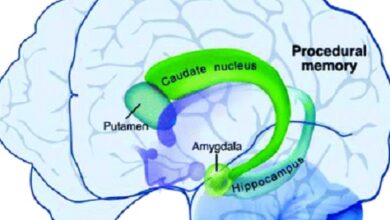Therapeutic writing Benefits and excercises
Therapeutic writing
Writing is no stranger to therapy. For years, professionals have used records, questionnaires, journals, and other forms of writing to help people recover from stress and trauma. In this artilce we will provide you a glimpse of Therapeutic writing.
Scholars trace the idea of writing as therapy back to the time of Egyptian Pharaoh Ramses II, around 1200 BC The entry to his royal library declared: ” Home of healing for the soul.” American Unity Minister Samuel Crothers coined the term “bibliotherapy” in 1916, and in the late 1980s, James Pennebaker spearheaded the modern writing therapy movement in a seminal research study that showed the potential health benefits of “expressive writing”. ” about emotional disorders.
Over the last two decades, therapeutic writing has united dance and therapeutic art as a legitimate therapeutic tool, which has sparked a growing interest in a type of writing that focuses on the healing power of putting feelings on paper or canvas.
More about therapeutic writing
By giving materiality to the non-existent, writing allows us to feel and see ourselves from another perspective. Hence the psychological importance of writing in our way of prefiguring change, of giving us a new image of ourselves, of envisioning an “authentic self” for ourselves, all to be discovered and reconstructed.
Writing means putting yourself in relationship with yourself and with others and training the ability to talk to yourself, discovering the uniqueness and beauty of each episode you experience and also the equally important ability to listen.
Writing as therapy leads to contact with oneself, and sometimes to the discovery of one’s inner time. The page becomes the white space in which one can say the unspeakable by being too intimate, or unknown even to oneself.
The writer’s ultimate goal is contact, so that in therapy writing can be a tool to fully reach the other. Writing is a support in the therapeutic process as a creative act whose objective is to favor the spontaneity of the self at the limit of contact, overcoming the blockage and achieving full contact: thus, therapeutic writing becomes a curative-creative act .
Writing and its development, first individually and then collectively, strongly demands a greater understanding of the other, a marked predisposition for those who are talking about themselves, a more felt and natural attention for those who are listening, a readiness to accept the new meaning of the lives of others and ours, in a climate characterized by an unquestionable and omnipresent trust.
Benefits of therapeutic writing
James Pennybacker, professor of social psychology at the University of Austin (Texas) and a leading scholar of the therapeutic effects of writing, both physical and psychological, has shown how the practice is useful as long as it is done with a certain constancy (in his laboratories he proposes to write for 15 minutes every day ), and that it is not only the facts that are told, but also the related emotions and consequences.
- Writing seems to function as an active coping strategy by building a narrative text that transforms disorganized emotional and sensory memories into a linguistic structure with a precise spatio-temporal dimension.
- The more coherent and vivid the narrative, the more it manages to understand the story itself , capturing its peculiarities and giving it meaning. For example, the person who writes about a traumatic event is obliged to translate it into words, that is, to organize and present the information in a linguistic structure, which implies immediate cognitive changes.
- In addition, he is obliged to deal with the emotions related to the traumatic event narrated and to manage its impact.
- Another benefit of therapeutic writing is that, little by little, changes are also introduced in social relationships and in the way of talking to others.
How to practice therapeutic writing
Having seen the many benefits of therapeutic writing, you may wonder what the best exercises are for practicing it. Whichever format is chosen, therapeutic writing can help the user stimulate their own personal growth , practice creative expression, and experience a sense of empowerment and control over their own lives. Below we will see 8 simple and creative therapeutic writing exercises.
1. Personal diary
The essence of our psyche is given by changes that seem to escape observation: the personal diary captures life, through words, a collage of lived moments and gives continuity to the variation of existence. Journal writing can, for example, be an essential part of the process of dealing with loss, grief, or grief. In this article, we talk about the stages of grief.
2. Free writing
Also called journaling , this therapeutic writing exercise allows the person to put down on paper the things that come to mind. There is no censorship or judgment involved in the free writing process; it’s about writing whatever comes to mind. In some cases, thoughts may be coherent and complete, while others may be partial sentences or isolated ideas. Writing can include both positive and negative feelings, but people are encouraged to accept and acknowledge all of them.
3. Poetry
While some people may find writing poetry intimidating at first, in some cases the process can be incredibly therapeutic. Therapists will usually guide this task in some way, giving the person ideas about what to write or how to organize thoughts into readable prose. Again, the words that go down on paper must be recognized and accepted without judgment for writing to be therapeutic.
4. Letter
This therapeutic writing exercise can be especially helpful for people who are struggling with an individual or a relationship. This letter can be written to express feelings towards the other person , be it happiness, anger, anger, resentment, etc. The letter could include many things that people want to say to each other face to face but cannot, for various reasons. The message should not be sent to the other person, it is a therapeutic writing exercise for yourself.
5. Automatic writing
A great way to avoid self and others judgment or continual mental burnout is to automatically write down random words that seem to have no connection with each other. However, they almost always contain a profound truth: they are suggestions, concepts, hopes, desires that come from that portion of consciousness that is normally blanked out of the mind. To find out which message comes from the conscious use of automatic writing, after a few days the words that you wrote automatically will be read.
6. The autobiographical story
Another exercise to continue practicing therapeutic writing is to tell your own life story. Writing an autobiography is not just a list of dates, names and events. On the contrary, creating an emotional story, immersing yourself in the role of the protagonist and facing the vicissitudes of life is a great way to find meaning in the existential experience and to build a more balanced identity.
7. Writing about the problem
Another very useful therapeutic writing exercise is one that we can practice in case we face problems. Start with the technique of ten minutes of non-stop writing to describe the problem at hand. Then, you must identify the main obstacles and analyze them one by one, spending ten minutes per point, per problem. Finally, write down what you really think about these problems and identify possible solutions. The solution may not come right away, but don’t despair because this is where the thought process that will lead you to the solution is usually triggered.
8. Deconstruction
We have to start from something that is part of our life and that we consider problematic and then, thanks to the continuous rewriting of the “problem”, break it down into smaller problems. This exercise allows us to give the correct dimension to the problem and see it from a new point of view, possibly with less worries, generalizations and trivializations.



